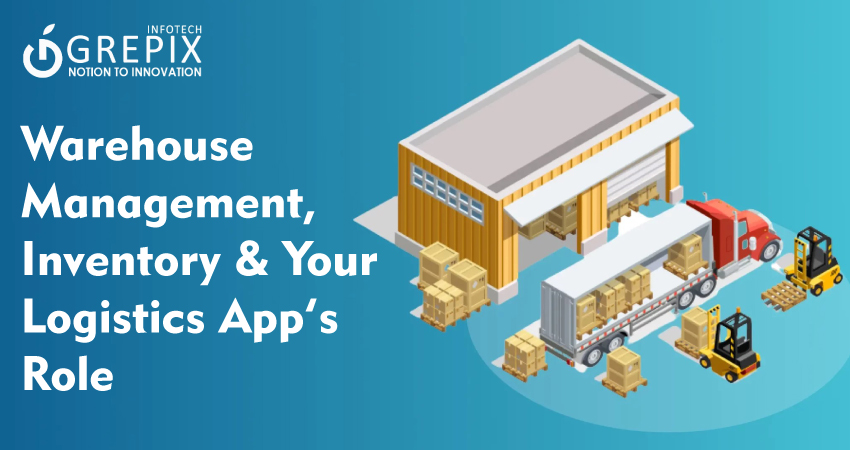Using Data Analytics to Predict Demand & Reduce Costs in Logistics
In today's hyper-competitive logistics sector, data analytics logistics app adoption is critical for businesses seeking efficient demand prediction delivery and optimized cost reduction logistics software solutions. Predictive logistics apps leverage big data and artificial intelligence to provide actionable insights on shipment volume, customer orders, and delivery patterns, helping companies stay agile and profitable. As real-world examples and statistics reveal, these innovations drive strong results for cost reduction and capacity optimization.
Modern logistics faces severe pressures high customer expectations, volatile demand, and the need for cost reduction. The answer: deploying data analytics logistics apps and predictive logistics software to transform delivery networks. These tools enable demand prediction delivery that optimizes inventories, cuts down routing costs, and improves forecast accuracy. Real-time data empowers logistics companies to proactively manage demand spikes, reduce delays, and minimize excess shipments. This guide explores the core role of predictive logistics apps in forecasting, proven cost reduction strategies, and actionable case study insights for decision-makers.
Role of Data Analytics Logistics Apps
Empowering Smart Decision-Making
- Data analytics logistics app platforms unify multiple data sources historical sales, shipment logs, external variables into actionable dashboards that enable demand prediction delivery and strategic planning.
- Predictive logistics apps use machine learning to spot seasonal patterns, optimize delivery times, and forecast disruptions, ensuring on-time and efficient operations.
- These platforms are rapidly adopted: Over 80% of logistics providers and shippers now invest in cost reduction logistics software running on predictive analytics.
Key Functions
- Real-time delivery forecasting
- Automated inventory management
- Route optimization and resource allocation
- Exception alerts and performance tracking
- Continuous improvement through AI model updates
Demand Forecasting With Predictive Logistics Apps
How Demand Prediction Delivery Works
- Data Aggregation: Collect data from sales, market trends, weather, and competitor activities.
- Model Training: Use AI and statistical models to train on historical demand, mapping out demand curves and volatility.
- Prediction Output: Models generate SKU-level, region-specific forecasts for shipments and product demand.
- Operational Alignment: Forecasts guide order planning, warehousing, and last-mile delivery schedules.
Examples
- Amazon’s Anticipatory Shipping Model: Predictive analytics logistics apps analyze past purchases and search trends to stage inventory close to predicted order locations, cutting last-mile delivery by hours.
- DHL MySupplyChain: Invested $350M in predictive logistics software for end-to-end inventory optimization, ramping up capacity in peak regions and trimming inventory in low-demand areas.
- Retail Chains: AI-powered demand prediction delivery platforms adjust inventory in real time, flagging slow movers and high-performing SKUs for strategic shipments.
Strategic Impact
- Reduced overstock and stockouts
- Increased order fill rates above 90%
- Fast adaptation to seasonal spikes
Cost Reduction Logistics Software Strategies
Actionable Steps With Data Analytics
- Dynamic Route Optimization: Algorithms in a predictive logistics app select the cheapest, quickest routes, factoring live traffic, fuel prices, and vehicle performance.
- Inventory Rationalization: By forecasting slow and fast-moving SKUs, companies reduce excess stock, lower carrying costs, and shrink wastage.
- Freight Spend Control: Analytics-driven lane and carrier analysis delivers best rates, smarter mode selection, and reduced manual auditing.
- Predictive Maintenance: Monitor truck and asset health to fix problems before breakdowns, lowering downtime and repair costs.
- Vendor and Supplier Management: AI highlights delays, underperformers, and alternative partners to maintain supply chain performance and cost controls.
Case Examples
- ThroughPut AI European Retailer: Cut logistics costs by 33% (€2M/year) and improved OTIF (on-time, in-full deliveries) to 90%+. Identified high-cost SKUs for inventory transfer with predictive analytics logistics app.
- AGCO Global Equipment Maker: Integrated cost reduction logistics software and a TMS; reduced freight costs by 18%, inbound costs by 28%, and inventory by 25% year-over-year.
- PLS Logistics Consumer Goods: Integrated ERP and analytics apps for full visibility, resulting in tens of thousands in inbound freight cost savings and streamlined vendor management.
Case Study Highlights
| Company | Predictive Logistics App Benefit | Cost Savings Impact | Success Rate |
|---|---|---|---|
| Amazon | Anticipatory delivery | Drastically lowered last mile cost | Up to 90% |
| DHL | MySupplyChain & analytics | $100–200M in annual savings | 60–90% |
| AGCO | Integrated analytics logistics | Freight cost down 18%, inbound 28% | 60–75% |
| Retail Chain | ThroughPut AI | €2M–€3.5M saved yearly | 80%+ |
| PLS Logistics | Analytics with ERP integration | Tens of thousands saved | 70–80% |
Future Insights for Predictive Logistics Apps
Next-Gen Trends
- Prescriptive Analytics: Moving beyond predictions to automatically implement optimal delivery actions.
- IoT & Real-Time Data: Every package, truck, and warehouse node streams live information, creating predictive delivery feedback loops.
- Autonomous Vehicles: Driverless assets coordinate with predictive logistics apps for even more cost and fuel savings.
- Sustainability Analytics: Minimize emissions through smart routing and inventory planning with AI tools.
- Blockchain-Enabled Tracking: Secure, transparent cost records improve financial controls and trust in logistics transactions.
Conclusion
The data analytics logistics app revolution is underway, empowering logistics decision-makers to predict demand, improve delivery, and cut costs with precision. Predictive logistics apps enable smarter planning, proactive risk management, and agile optimization through actionable forecasts and automated workflows. Companies, large and small, see dramatic results increased delivery accuracy, lower inventory, faster transit times, and ongoing cost improvements. Now is the time to deploy cost reduction logistics software and predictive delivery systems transforming logistics for next-level performance.
FAQs
1. How does a data analytics logistics app predict delivery demand?
A data analytics logistics app combines historic shipments, real-time market variables, weather patterns, and economic data using machine learning models to accurately forecast future demand and guide delivery scheduling.
2. What is the impact of predictive logistics apps on cost reduction?
Predictive logistics apps help automate routing, optimize inventories, and identify inefficiencies, leading to measurable annual savings often millions for large enterprises.
3. Can cost reduction logistics software work for small businesses?
Yes. Affordable predictive logistics apps scale down for SMBs with pay-as-you-go pricing, offering route optimization, demand forecasting, and vendor management benefits.
4. How accurate are demand prediction delivery models?
With clean data and robust algorithms, predictive logistics apps deliver demand forecast accuracy rates between 60–90%, depending on industry and data maturity.
5. What future innovations will boost logistics analytics?
Expect more prescriptive analytics, IoT integration for real-time updates, autonomous fleet management, sustainable shipping algorithms, and blockchain-powered cost reduction logistics software.







